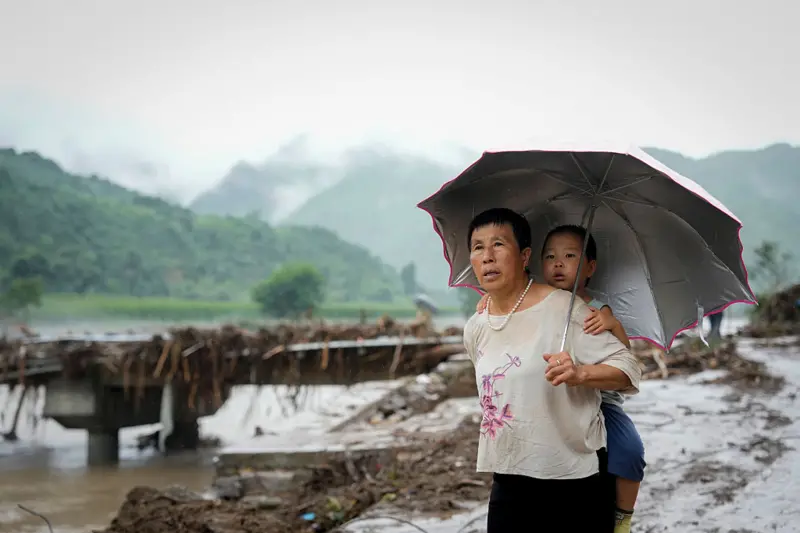Severe flooding and landslides caused by continuous heavy rains have left northern China in turmoil, with at least 30 people confirmed dead in Beijing and tens of thousands forced from their homes.
The disaster, described by locals as one of the worst they have experienced, has prompted a wide-scale emergency response as the government races to contain the destruction caused by days of rainfall.
Beijing, the capital, is among the worst affected. According to the city’s flood control headquarters, the death toll stood at 30 by midnight Monday, with Miyun district reporting the highest number of deaths.
Other badly hit areas include Huairou and Fangshan, where roads have been washed away, crippling transport, power supply, and communication.
More than 80,000 people have been moved from high-risk areas in Beijing, and over 130 villages have reported power loss and blocked access routes.
Emergency teams made up of firefighters, police, and other personnel have been working non-stop to rescue those stranded. In Miyun, responders braved deep waters to save residents and their pets, including 48 elderly people from a submerged care facility.
In neighboring Hebei province, the situation is also dire. A landslide near Chengde city killed four people, while eight others are still missing. Flash flood alerts remain in effect for several counties in the region as the rains continue.
President Xi Jinping has urged swift intervention, calling on officials to give top priority to protecting lives and to prepare for the worst.
In support of ongoing efforts, the government has released 350 million yuan (about $49 million) to assist nine provinces, with 200 million yuan specifically allocated for flood control in Beijing.
This disaster follows similar storms last year that claimed over 80 lives across northern China, including 29 in Hebei alone. The back-to-back events have raised alarm over the growing threat of climate-related disasters in the region.
Experts have repeatedly warned that rising global temperatures are intensifying rainfall, making sudden floods and landslides more frequent and more dangerous.
While China is the largest emitter of greenhouse gases, it has committed to achieving carbon neutrality by 2060 and has expanded its use of renewable energy. But the ongoing crisis shows the need for stronger systems to deal with climate shocks.
Other recent disasters, including deadly floods in Shandong and a major landslide in Sichuan, highlight how extreme weather is placing greater pressure on China’s emergency services, especially during the summer monsoon period.
Rescue operations are still ongoing in several regions as the rains continue, and authorities are urging people to stay alert and avoid flood-prone zones.

